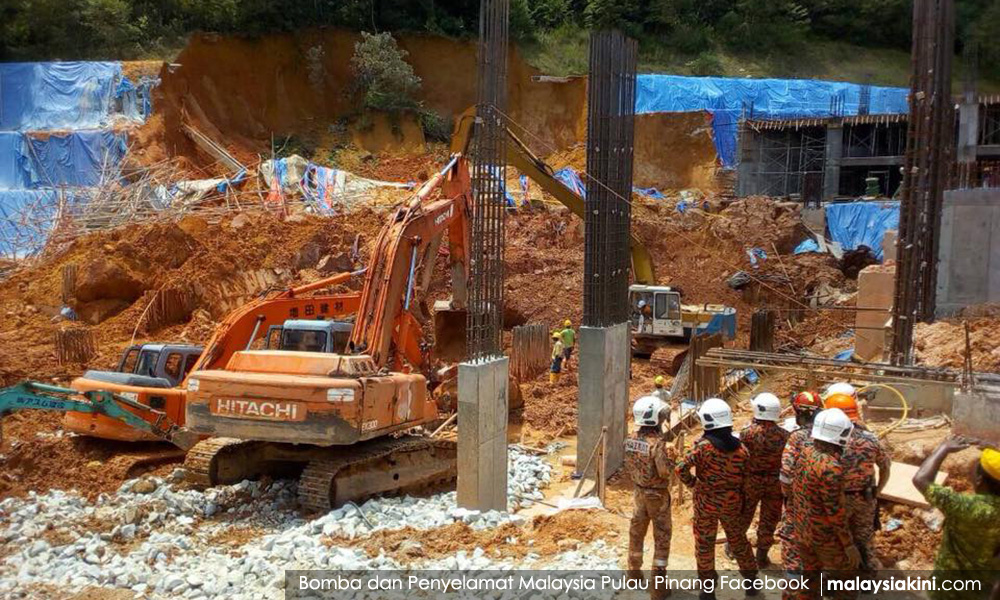ADUN SPEAKS | Rather than taking an objective look at the reasons behind the recent collapse of the hill slope on the construction site in Tanjung Bungah, some section of the mass media and those in the federal government are already taking shots at the Penang state government for being responsible for the tragedy.
"I told you so" phenomenon has emerged among the diehard critics of the Penang state government. For them, unfortunately, despite the loss of lives - one Malaysian and several foreign workers, the Tanjung Bungah hill slope tragedy is something that they will use and reuse to hit at the Penang state government for years to come.

For the last few years, members of civil society have asked the government to put a lid on developments in hillside areas. They are not satisfied that Penang government has a low tolerance for development projects that exceed the limit of 76 metres.
Yet these “do-gooders” are silent when it comes to development in high-density areas like Kuala Lumpur where there is a high tolerance for hillside projects of 300 metres.
The question is, was the landslide that occurred in Tanjung Bungah the result of unhindered hillside development?
Lately, the Natural Resources and Environment Ministry has accused the Penang state government of not paying attention to the operation of granite quarry above the construction site.
According to the ministry, the granite quarry above the construction site was in operation from 1960 and onwards. It conducts blastings two times a year - the last blast was on October 9, 2016.
The ministry, it seems, never supported the condominium project on the site as it issued a rejection letter on January 23, 2015.
It lamented that the state government failed to monitor the project.
Whether the landslide had anything to do with housing project per se remains to be established. The fact that housing project was on a flat piece of land raises questions about this line of reasoning.
There is the possibility that those responsible for the housing project - the developer, the consultant engineers and the contractors - might have possibly overlooked the requirements of hill slope management, even though the hill slope was adjacent to the construction site.
The ministry's argument that the collapse of the hill slope might be related to the granite quarry activities above the construction site remains to be proven.
Yes, the ministry might have rejected the project on the grounds that there were no sufficient buffer zones established between the project and the site of quarry operations. However, there is nothing concrete to say that the quarry operations were the cause of the collapse of the hill slope.
Whatever the case, the commission of inquiry that will be set up must pay serious attention to the issue raised by the ministry. It must examine whether the failure to observe the requirements of buffer zones could have caused the tragedy to take place.
However, right now, there is no point in politicising the matter, as there is nothing conclusive about whether the quarry project could have been the cause.
While some sections of media have gone to town with headlines splashed on front pages, such enthusiasm and passion were lacking among them when the uncompleted ramp of the second Penang bridge and the topmost structure of Menara Umno building collapsed some time back within a period of one week.
The Penang government is open to criticisms. It will take a responsible role in terms of preventing such mishaps from happening in the future. However, to put the blame squarely on the state government is not acceptable.
P RAMASAMY is Penang Deputy Chief Minister II and Perai assemblyperson.
The views expressed here are those of the author/contributor and do not necessarily represent the views of Malaysiakini.





